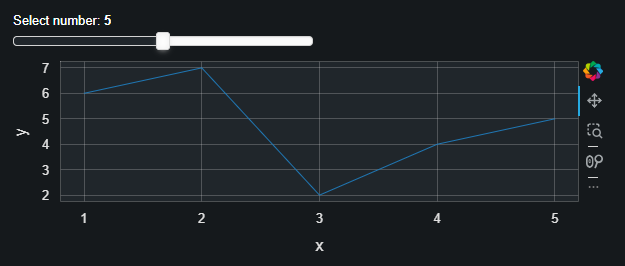Hello hidara, welcome to Bokeh Discourse.
In the future, please provide a minimal, reproducible, self contained and working example, see MRE.
The code starts with the imports and usually ends with show(layout), or curdoc().add_root(layout) if there are Python callbacks.
That way, the reader can run the code quickly and the probability you get an answer is higher.
About your question:
You might already had a look at following links:
The background of the app can be setup by providing your own HMTL template.
So I recommend to use the directory format for your app. A simple hierarchy could be:
myapp
|
+ - main.py
+ - templates
+ - index.html
+ - theme.yaml
So in words: In the directory called myapp, place a main.py file containing your code, and a subdirectory called templates containing a file index.html.
Optionally, instead of using the built-in theme dark_minimal, you could add your own custom theme as a theme.yaml file to your directory.
As a compact example, the code in main.py could be:
from bokeh.io import curdoc
from bokeh.plotting import figure
from bokeh.models import InlineStyleSheet, Slider
from bokeh.layouts import Column
from bokeh.themes import Theme
import os
# Preconfiguration to get the relative path of the theme.yaml:
dirname = os.path.dirname(__file__)
# Prepare some data
x = [1, 2, 3, 4, 5]
y = [6, 7, 2, 4, 5]
# Create a new plot
p = figure(x_axis_label="x", y_axis_label="y", height=200)
# Add renderer:
line = p.line(x, y)
# Prepare CSS formatting for the title color of the slider:
stylesheet = InlineStyleSheet(css=".bk-slider-title { color: white; }")
# Create slider:
slider = Slider(start=0,
end=10,
value=5,
step=1,
title="Select number",
bar_color="#20262B",
stylesheets=[stylesheet]
)
# Create layout:
layout = Column(slider, p)
# Define layout of the elements:
# Either with a built-in theme:
curdoc().theme = 'dark_minimal' # <-- Toggle the comments to test
# Or by using a custom theme defined in the theme.yaml file in your app directory:
# curdoc().theme = Theme(filename=os.path.join(dirname, 'theme.yaml')) # <-- Toggle the comments to test
curdoc().add_root(layout)
The HMTL template is given in the index.html file and could be:
<!DOCTYPE html>
<html lang="en">
<head>
<style>
body { background: #15191C; }
</style>
<meta charset="utf-8">
{{ bokeh_css }}
{{ bokeh_js }}
</head>
<body>
{{ plot_div|indent(8) }}
{{ plot_script|indent(8) }}
</body>
</html>
For a seamless appearance, I set in the HTML template the background color to #15191C, which is the same as in the border_fill_color in the dark_minimal theme, as you can see here: https://github.com/bokeh/bokeh/blob/branch-3.4/src/bokeh/themes/_dark_minimal.py
To change the title color of the slider, you will have to use CSS, see here: python - slider text color change in bokeh lib - Stack Overflow
That is why you will find following line in the code:
stylesheet = InlineStyleSheet(css=".bk-slider-title { color: white; }")
and then stylesheets=[stylesheet] in the arguments of the slider definition.
In the theme.yaml, you could have following content:
attrs:
Slider:
bar_color: '#3A1F04'
Plot:
background_fill_color: '#3A1F04'
border_fill_color: '#4B3A26'
outline_line_color: '#444444'
Axis:
axis_line_color: !!null
Grid:
grid_line_dash: [6, 4]
grid_line_alpha: .3
Title:
text_color: "white"
I use here brown colors to differentiate from the dark_minimal theme.
Note that the slider bar color (left from the selector) is defined here, but it will be overridden by the argument bar_color="#20262B" in the arguments of the slider definition.
At last, start the app with:
bokeh serve --show directory_name
With the dark_minimal theme, I get this:

After switching the comments to use the custom brown theme:
